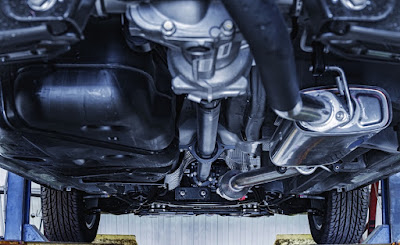Is your vehicle starting to sound a little loud as you drive down the street? Does it seem to lack power when trying to pass a slower vehicle? If so, schedule an inspection of your exhaust system and muffler. To fulfill its purpose, the components of the exhaust system work together to funnel gases from the engine's combustion chamber out the back end of the car. If anyone or more of those components aren’t working correctly, the entire exhaust system will be affected and will run less efficiently.
So what does an exhaust system consist of? Here is a brief description of the seven most vital components of the exhaust system:
- Exhaust pipe -- The exhaust pipe runs the length of the car and is connected to all of the exhaust system's components.
- Exhaust manifold -- The engine’s cylinders funnel the fuel-air mixture from the combustion chamber into the exhaust manifold out through the exhaust pipe.
- Oxygen sensor -- This is commonly located in the exhaust pipe. It measures the ratio of oxygen to the exhaust gases and alerts the car's computer if the emission levels are too high.
- Catalytic converter -- This converts the toxic fuel emissions into less toxic pollutants.
- Resonator -- As exhaust gases travel through an internal pipe it helps eliminate a lot of the noise by rejecting sound waves and canceling each other out.
- Muffler -- The muffler also eliminates noise by redirecting the airflow through porous pipes, allowing the exhaust gases to expand into sound deadening material.
- Tailpipe -- This is often the only visible part of the entire exhaust system where the exhaust gases exit the vehicle into the air.
Need to know more about what does an exhaust system consist of? Call our ASE Certified technicians at theWrench, Ltd. Car Care Center today for more information and to make an appointment. Our auto repair shop proudly serves residents in Silverdale, WA, and the surrounding area.

No comments:
Post a Comment